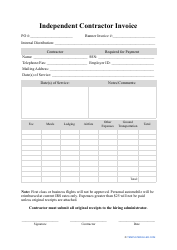Quote Vs Invoice

What Are Quotes and Invoices?
An Invoice is a commercial statement used by merchants to collect payments from customers. Drafted once the shipment of goods has been finalized or the services have been rendered, this itemized list will contain the description of the sold products, their value, and the payment methods the client can use to send the money to the seller. However, before the work begins and any contracts are signed, the parties must make sure they are on the same page in terms of expectations and legal conditions of the sale and purchase. The document that will help you to inform the prospective client about the price of the goods and services you provide is a Business Quote - the customer cannot commit to the purchase before they know how much they have to pay for the items they will get. If you are using accounting software, you should streamline the Quote to Invoice process to know what conditions you are offering different purchasers and when you should expect the payment they owe you.
What Is the Difference Between an Invoice and a Quote?
The main difference between a Quote and an Invoice is the purpose of these documents - while a Quote is prepared to notify the customer about the prices of goods and services while the negotiations between the parties are still ongoing, an Invoice that serves as a request for payment will be necessary to close the transaction - when the items ordered by the customer are delivered, you can compose and send an Invoice to the buyer. Additionally, a Quote is never legally binding, it is an offer the client can refuse if the terms of the proposed agreement do not satisfy them, and the Invoice will be enforceable since the seller has adhered to their obligations under the agreement and now asks the purchaser do the same.
Invoice Vs. Receipt
While Invoices and receipts have many similarities - they serve as the proof of sale listing the main details of the transaction, there is still a difference. A receipt is typically printed out by a merchant when the payment is made - the customer can get a copy of the receipt immediately; there is also an option to obtain an electronic receipt which depends on the wishes of the parties. An Invoice, on the other hand, is created to request a payment - the buyer is asked to send the money within 2-4 weeks after they receive the Invoice via e-mail. Also, an Invoice is typically a more detailed document that may include the addresses of the parties and the discount added to reward a loyal customer - a receipt is relatively simple, the main purpose of this document is to list the items without a description, their price, and the payment method the client used to pay for the products or services.
Proposal Vs. Invoice
Another instrument widely used by sales companies to promote their products and services is a proposal - it pitches the listed items to current or potential clients illustrating their value and offering solutions to issues the customers may struggle with at the moment. This is one of the most important documents composed by the business that sells goods and renders services - it convinces the prospective purchaser to choose this particular seller, agree to the terms the proposal contains, and work with the vendor in the future. There is a difference between an Invoice and a proposal - an Invoice demands payment, and a proposal is not legally enforceable - the purpose of this document is to share the idea with the buyer, tell them how you can improve their business or deal with the problem that has bothered them, and indicate the prices of goods. An Invoice is a billing statement and its provisions must be complied with - if the customer fails to do so, it may lead to fines, penalties, and even legal disputes between the parties.
Related Topics:







